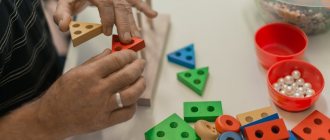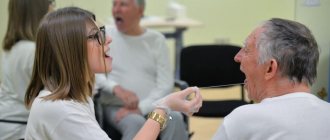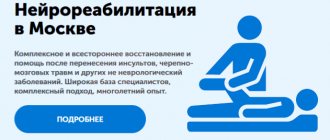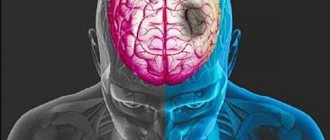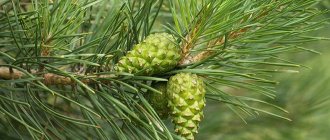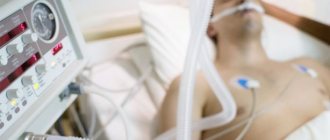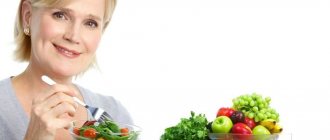A stroke is an acute disturbance of blood circulation in the brain and, as a consequence, its focal damage. It entails irreversible consequences for the body; it can disrupt clarity of consciousness, the functioning of internal organs, cause paralysis, and more. To restore the body, as well as for effective rehabilitation, the patient needs to change the usual approach to household things, observe a special regime, and follow certain nutritional rules after a stroke. Often this all becomes the responsibility of family and friends.
General recommendations
The diet must meet the following requirements:
- fractional meals according to schedule;
- do not create excessive stress on the gastrointestinal tract;
- ensure a balanced intake of fats, proteins, carbohydrates, vitamins into the body;
- meet the permissible calorie level;
- contain a minimum of salt, sugar and more liquid;
- do not contain fried foods: only boiled and stewed (soups, cereals, vegetables).
Calorie content
In the first days after discharge from the hospital, the daily calorie intake should not exceed 1500 kcal; after a week it can be increased to 2000 kcal. After 3-4 weeks you can reach the level of 2500 kcal. The ratio of fats, proteins and carbohydrates should correspond to the values of 50, 100 and 500 g per day. It is better to obtain fats through the consumption of seafood, nuts, and unrefined oil; proteins - from lean meat (chicken, rabbit); carbohydrates - from cereals, bread, pasta.
Fractionality
Meals should be taken in small portions at least five times a day, preferably at the same time. The last dose should be no later than 3 hours before bedtime. Overeating is unacceptable. Feelings of hunger between meals can be satisfied with tea without sugar or low-fat kefir.
Temperature
It is important to avoid temperature excesses: both too hot and too cold food are harmful. The optimal food temperature should be +38 °C. Warm food is better absorbed and does not overload the gastrointestinal tract.
Consistency
After a stroke, the ability to eat is greatly limited, so the person is first fed through a tube. As chewing and swallowing functions are restored, you can move on to spoon-feeding liquid and puree foods. When the patient can chew, you can begin to give food in small pieces.
Heat treatment
The optimal types of heat treatment are boiling and stewing. Frying and deep frying are strictly prohibited.
Tips for choosing products
Proper nutrition for people who have suffered a stroke is the path to a speedy recovery. A weakened body is incredibly vulnerable, and damaged functions need to be restored. Incorrectly selected products can significantly worsen the patient’s condition and even provoke a new attack. Therefore, when creating a menu, you must constantly check the list of permitted and prohibited foods compiled by your doctor.
Healthy food
The list of healthy foods includes:
Low-fat varieties of fish, meat and poultry:
- a rabbit;
- beef;
- turkeys;
- Chicken;
- cod;
- flounder.
Low-fat dairy products:
- milk;
- kefir;
- curdled milk;
- fermented baked milk;
- cottage cheese.
Cereals:
- wheat;
- buckwheat;
- oatmeal
Vegetables, baked or pureed:
- eggplant;
- carrot;
- pumpkin;
- tomatoes;
- potato;
- beet;
- red and green peppers.
Berries and juices from them:
- pomegranate;
- grape.
What is undesirable to eat?
For hemorrhagic stroke, the menu in small quantities can include:
- egg yolk;
- fish caviar;
- legumes;
- raisin;
- fatty fish;
- processed cheese;
- sweet cereals;
- milk soups.
Despite the possibility of taking these products, doctors recommend including them in the diet as rarely as possible.
What foods are prohibited?
The following are strictly prohibited:
- any fatty foods (meat, milk, cottage cheese, sour cream, etc.);
- semi-finished products and by-products;
- pickles, smoked foods, pickles;
- hot sauces, seasonings;
- bakery;
- sausages;
- chocolate;
- Tea coffee;
- cheeses;
- confectionery creams in oil;
- fatty broths;
- leafy greens;
- mushrooms.
Proper nutrition after a stroke
ACVA (acute cerebrovascular accident - stroke) is a pathological condition, in the treatment of which it is very important to undergo a competent rehabilitation process. Meanwhile, rehabilitation specialists are increasingly noting that the recovery of patients with this condition is complicated by an incorrectly selected diet or insufficient adherence to it. If there is a violation of the diet, the supply of nutrients in insufficient quantities greatly reduces the quality of rehabilitation and does not allow some body functions to return to normal. At the same time, the length of hospitalization, as well as the risks of mortality or complications, increase significantly.
In order for the restoration of functions lost due to a stroke to proceed faster, it is important to provide the patient with adequate care, especially in the first days, when the condition is most severe. During rehabilitation, a properly formulated diet plays a significant role so that the patient can receive all the necessary nutrients, vitamin and mineral components.
There is no special diet for people who have suffered a stroke; it is developed individually, based on the patient’s condition, age, general condition and ability to eat, chew and swallow. Some require the use of nutritional mixtures (in the acute period) with a gradual transition to regular food (as their condition improves and functions are restored), including at home under the supervision of caring relatives or nurses.
Vitamins
To speed up the recovery of vital functions, the patient requires vitamins:
- "Retinol" (vitamin "A"), involved in the synthesis of taurine, necessary to prevent nervous excitement.
- B vitamins that normalize digestion, blood circulation and restore neurons.
- “Ascorbic acid” also helps normalize blood pressure and restore vascular elasticity.
- “Tocopherol” (vitamin “E”), which improves the flow of oxygen to the brain.
- Vitamin “P”, necessary for the regeneration of nerve tissue.
Nutrition problems after cerebral stroke
Experts highlight certain problems and features of caring for people who have had a stroke:
- Possible difficulties with chewing and swallowing food;
- if the mobility of the hand is affected, it may be difficult to use a fork or spoon;
- Appetite may worsen, moodiness and selectivity in eating may occur;
- memory impairment is possible - the patient forgets what and when he ate.
- Many patients are prescribed strict bed rest due to the threat of recurrent stroke, general serious condition, and partial impairment of motor functions.
Patients after a stroke need a diet that will help quickly restore lost body functions, while also providing the necessary substances for life (including in cases of impaired swallowing reflex and chewing process).
Rules for eating, or how to feed a stroke patient?
The most general rules for feeding a person in a post-stroke state are:
- Providing a quiet, calm environment, since the inability to feed independently has a strong depressing effect on the patient, which can lead to increased irritability and refusal to eat.
- Encouraging independence, even if this significantly slows down eating.
- Providing special utensils from which food and liquids will spill less. For example, you can drink through a straw, and put porridge not in an ordinary plate, but in a deep bowl.
- Feeding should take place in a sitting position from unbreakable containers.
- If the patient is bedridden or paralyzed, then all food should be liquid (to avoid constipation).
- You should always keep a towel or napkin at hand.
- The nurse should always remain in the patient's field of vision so that he can observe his movements.
When compiling a menu, it is necessary to take into account calorie content, vitamin composition and the presence of a sufficient amount of microelements:
- vegetables and fruits are excellent antioxidants necessary for hemorrhagic stroke;
- whole grains and broccoli are high in folic acid;
- potatoes, oranges, prunes are rich in potassium;
- You must eat boiled lean meat at least once a week;
- foods cannot be cooked in fat, and fat should only be consumed in the form of vegetable oil;
- Only lean meat, fish and dairy products are allowed;
- drinks are served weakly brewed;
- sauces and seasonings should not be spicy or salty;
- vegetables, meat, fish and poultry should be cooked in the oven, steamed or boiled. Frying is strictly prohibited;
- a serving of soup should not exceed 250–400 g;
- Fresh baked goods are prohibited. Bread and cookies should be eaten dry.
Features and benefits of special mixtures for patients after a stroke
Special mixtures are nutritious and balanced food products in a drinking format. They are completely ready for use and balanced in all necessary components (contain the required amount of protein, slow carbohydrates and all mineral and vitamin components).
Moreover, everything you need is in small 200 ml bottles. The essence of sipping nutrition is that such mixtures can be consumed either through a straw, or in the usual way, but in small sips (within half an hour), which is quite convenient for a patient undergoing rehabilitation. Such mixtures replace a large number of products and are a quality addition to the menu of a sick person.
The Nutricia company, one of the leaders in the field of specialized nutrition, has just developed products for feeding people undergoing rehabilitation. As a supplement to your regular diet, you should drink from one to three bottles of the Nutridrink mixture per day. If the patient cannot eat regular food, it can be completely replaced with Nutridrink - but in the amount of 5-7 bottles per day. To ensure that special nutrition evokes only pleasant sensations, patients are offered several flavors: vanilla, chocolate, banana and strawberry.
Doses of special nutrition must be further discussed with a nutritionist and attending physician - they are prescribed individually, taking into account the personal calculation of nutrients for a particular person. With the correct calculations, Nutridrink will provide the body with everything it needs and will contribute to better and faster rehabilitation after a stroke.
Menu
A sample menu for three days might look like this:
Monday
Breakfast – cottage cheese casserole, weak and unsweetened tea.
Second breakfast – apple, biscuits.
Lunch – vegetable soup, a piece of rye bread.
Afternoon snack – biscuits, fruit or berry decoction.
Dinner – vegetable puree, steamed fish, vegetable juice (tomato).
At night - kefir.
Tuesday
Breakfast - an omelet of 2-3 egg whites, weak and unsweetened tea.
Second breakfast – low-fat cottage cheese with berries.
Lunch – vegetable puree soup, steamed chicken cutlet, cabbage salad, rosehip infusion.
Afternoon snack – low-fat yogurt.
Dinner – steamed mackerel fillet, boiled black rice, dried fruit compote.
At night - kefir.
Wednesday
Breakfast - oatmeal porridge with low-fat milk, bran bread, tea.
Second breakfast – low-fat yogurt.
Lunch – fish soup, buckwheat porridge, fruit juice.
Afternoon snack – fruit salad.
Dinner – pumpkin casserole, berry juice.
At night - kefir.
Recipes
When choosing recipes for compiling a patient’s menu, it is necessary to proceed not only from usefulness. It is very important that the food is varied and tasty.
First meal
To prepare chicken soup:
- It is necessary to cook broth from the breast.
- Grind the finished chicken.
- Chop the carrots and onions and lightly fry in vegetable oil.
- Add wholemeal noodles to the broth and cook until tender.
- Add vegetables to the finished soup and simmer for another 3 minutes.
- Add finely chopped greens.
Second courses
To prepare millet porridge with prunes, you need:
- Take 100 g of prunes, rinse, add 300 ml of water and boil for 5 minutes. Then cool, remove the seeds and chop.
- Pour 200 g of millet into 400 ml of water and cook until the liquid boils away.
- Place prunes on the porridge, place the pan in the oven and bake at 180°C for 10 minutes.
To prepare baked flounder:
- Clean the fish, wash, dry, grease the inside with lemon juice and leave to marinate for an hour.
- Wrap the fish in greased foil and bake in the oven for 40 minutes.
- Place the fish on a plate and sprinkle with lemon juice.
